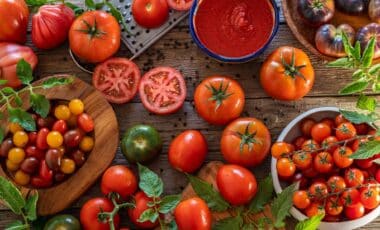In today’s fast-paced world, nailing a breakfast that’s both healthy and quick to whip up can be a real challenge. If you’re up for trying something new, yakuzen zakkokumai might be just what you need. (This multigrain rice breakfast not only brings a bunch of health perks but also ties together Japanese traditions with everyday American ingredients.)
Embracing change: from Japan to the U.S.
The journey into yakuzen zakkokumai starts with a personal story of change. Back in the 1990s, someone moved from Japan to the U.S. and struggled at first to find the Japanese ingredients they were used to. Still, they soon discovered that whole grains and beans were much easier to come by over here, sparking the creation of this unique breakfast ritual.
Yakuzen zakkokumai is made by mixing brown rice, beans, natto (fermented soybeans), and nukazuke (pickled vegetables), all wrapped in nori (seaweed) and topped with roasted sesame seeds. The dish gets a perfect sidekick in a bowl of miso soup and a cup of hojicha green tea, which together form a balanced meal bursting with flavor and nutrients.
The health benefits of yakuzen zakkokumai
This breakfast isn’t only about great taste—it’s loaded with important nutrients like iron, iodine, potassium, calcium, magnesium, and vitamins B, C, and K. The brown rice, beans, and seaweed offer plenty of fiber to help with digestion, while natto and nukazuke, both fermented foods, bring along a hearty dose of probiotics for a happy gut.
Plus, nori and green tea are known for their polyphenols (antioxidants that help fight off sickness and inflammation, as well as keep blood sugar levels in check). The tofu in the miso soup, paired with beans, provides a top-notch protein source without the cholesterol or the environmental concerns linked to meat or dairy products.
Crafting your own yakuzen zakkokumai
Making yakuzen zakkokumai at home takes a bit of planning, but it pays off with week-long convenience. The idea is to do some batch cooking at the beginning of each week. Keep your homemade natto, nukazuke, and miso soup on hand so you can quickly throw together a tasty breakfast each morning.
For those wanting to keep it authentic, organic California short grain brown rice is the go-to staple. Every now and then, ancient rice varieties are ordered from Morika in Nara via The Rice Factory to add a touch of old-school tradition. Seasonal vegetables used in nukazuke—like eggplant, cucumber, napa cabbage, daikon radish, and Japanese turnip—come straight from Suzuki Farm in Delaware.
Preparing rice and beans
Start by mixing three cups of brown rice with one cup of beans. A small piece of kombu seaweed is thrown in to boost the flavor while the rice cooks on its brown rice setting for two hours. Once done, store it in an airtight container in your refrigerator. Repeat this process two to three times a week to keep things fresh.
Fermentation: natto and nukazuke
Making natto at home means soaking soybeans overnight, then boiling them for up to four hours. Next, add a natto starter culture and let the mixture ferment under warm conditions inside an oven for about 20–24 hours before popping it into the fridge to finish the process over the next ten hours.
For nukazuke, lightly salt your chosen veggies and mix them into “nukadoko” (that’s fermented rice bran paste) to marinate in the refrigerator for two to three days until they’re ready to eat. If you prefer, you can also pick up pre-made versions online or at your local grocery store.
Miso soup: a complementary delight
To make miso soup, combine water with pieces of kombu seaweed and dried shiitake mushrooms. Toss in diced potatoes, chopped ginger slices, and finely sliced onions and carrots—all boiled together and then simmered for about ten minutes.
Meanwhile, dissolve white miso paste in half-cup portions before stirring it back in with firm tofu chunks and pieces of wakame seaweed. Let the soup simmer for another three minutes to finish things off.
Whipping up these breakfasts at home gives you not only a healthy start to the day but also a neat cultural experience (bridging traditional practices with today’s on-the-go lifestyle). It’s a friendly invite to step out of the ordinary and explore fresh culinary horizons!







